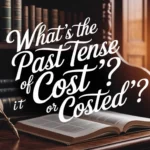Understanding the difference between compare vs contrast is fundamental in communication, writing, and critical thinking. These two techniques are frequently used across various disciplines, from academic essays to business reports and personal reflections. Yet, people often confuse them, failing to leverage their full potential.
In this comprehensive guide, we will dive deep into the definitions, differences, purposes, methods, examples, synonyms, and origins of the words “compare” and “contrast,” offering practical tips and insights to master their usage.
When you compare or contrast things, you’re not just finding similarities or differences; you’re constructing meaning and building understanding. Whether you’re writing a persuasive essay, analyzing data, or simply having a conversation, the compare vs contrast distinction plays a significant role. These concepts allow you to organize thoughts, frame arguments, and present information in clear, compelling ways.
But what exactly does each term mean? How are they used differently in different contexts? And how can understanding these differences make you a more effective communicator? This post will answer these questions and more, providing a thorough breakdown of each concept, examples of how to use them, and tips for avoiding common mistakes. Let’s jump right in.
What Does “Compare” Mean?
The word “compare” involves examining two or more things to note their similarities and differences. The focus here is generally on finding shared characteristics, traits, or qualities. When you compare, you’re typically aiming to show how two or more things are alike or how one is better than another.
Definition:
- To compare means to examine or consider two or more things in relation to each other, focusing on their similarities, differences, or both.
Examples in context:
- “Let’s compare the two phones based on their screen size and battery life.”
- “When you compare these two restaurants, the quality of food at Restaurant A is superior.”
While “compare” often deals with similarities, it doesn’t exclude differences. In fact, good comparisons highlight both aspects. For example, when comparing two cars, you might look at their fuel efficiency, design, and features — which could either align or diverge.
In Summary:
- Purpose: To analyze similarities and sometimes differences.
- Focus: More on what’s alike than on what’s different.
- Method: Identifying common ground, similarities, or assessing benefits.
What Does “Contrast” Mean?
On the other hand, “contrast” emphasizes examining the differences between two or more things. When you contrast, you’re not concerned with what’s the same; you’re focused solely on how the items differ from one another.
Definition:
- To contrast means to highlight the differences between two or more things.
Examples in context:
- “Let’s contrast these two novels by focusing on their themes and writing styles.”
- “The marketing strategies of these companies are vastly different. Let’s contrast their approaches.”
While comparing shows both the similarities and differences, contrasting is more specific. It’s about differentiating between things to draw out distinct features or qualities.
In Summary:
- Purpose: To show differences.
- Focus: More on what’s different than on what’s alike.
- Method: Identifying distinctions, highlighting opposites.
Compare vs Contrast: What’s the Real Difference?
While both comparing and contrasting require analysis, the real difference lies in the focus of the examination. Let’s break it down:
| Aspect | Compare | Contrast |
| Purpose | To find similarities and differences. | To emphasize differences. |
| Focus | Emphasizes similarities. | Emphasizes differences. |
| Method | Finding common ground and highlighting similarities. | Highlighting distinctions and opposites. |
| Outcome | A balanced understanding of both similarities and differences. | A clear understanding of how things differ. |
In short, compare is about looking at both the similarities and differences, whereas contrast is focused solely on the differences. Understanding this difference allows you to choose the right technique for your analysis or communication needs.
The Purpose Behind Comparing and Contrasting
Both comparison and contrast serve crucial functions in reasoning and understanding. Here’s why each technique is important:
- Comparing helps you find connections and understand commonalities between things. It can help create connections that make things more relatable and easier to understand. For example, comparing two job offers can help you determine which one offers more benefits, better pay, or more career growth.
- Contrasting, on the other hand, helps you differentiate and see distinctions clearly. It’s especially useful when making decisions. For instance, contrasting two companies’ work cultures helps employees decide which environment best suits their values and work style.
When to use each technique:
- Compare: Use this method when you want to show similarities, draw connections, or evaluate both the positive and negative aspects of two items.
- Contrast: Use this method when you need to focus on how two items are distinctly different, such as comparing two marketing strategies to choose the most effective one.
Key Focus Areas: Compare vs Contrast
The focus of each technique is another area of distinction. Let’s break this down more:
- Compare: Focuses on what’s common between items. This method helps establish relationships and is often used when you’re trying to evaluate options that have both good and bad qualities.
- Example: Comparing two types of software tools to evaluate which one best meets your needs.
- Contrast: Focuses on what’s distinct. This method is perfect for highlighting differences or making distinctions between things that are very different.
- Example: Contrasting two different political ideologies or contrasting the leadership styles of two CEOs.
In summary:
- Compare: Focus on shared features.
- Contrast: Focus on unique features or opposites.
Methods Used to Compare and Contrast
There are different methods for comparing and contrasting things effectively. Here are the two most popular approaches:
- Block Method
This method organizes your writing into two blocks. Each block focuses entirely on one subject, followed by a comparison or contrast with the other subject.
Example: If you’re comparing two smartphone brands, you’d first dedicate an entire section to one brand and then discuss the second brand in the following section. - Point-by-Point Method
In this approach, each point of comparison or contrast is discussed one by one, with references to both items for each point.
Example: When comparing two novels, you would go point by point — one paragraph dedicated to theme, one to writing style, and so on.
Visual Method: Venn Diagram
A Venn diagram is a great tool for showing overlapping features in a comparison or highlighting differences in a contrast. It’s especially helpful in the early stages of analysis.
Practical Examples of Compare and Contrast in Context
Examples of Comparing
- Comparing two cities:
“Both New York and Tokyo are global financial hubs, offering vibrant cultural scenes, but New York is known for its skyscrapers, while Tokyo has a distinctive mix of modern architecture and traditional shrines.” - Comparing two tech gadgets:
“The iPhone 14 and Samsung Galaxy S22 offer similar features like 5G support, high-quality cameras, and sleek designs, but the iPhone’s user interface is more intuitive, while the Galaxy offers a more customizable operating system.”
Examples of Contrasting
- Contrasting two political ideologies:
“Democratic socialism focuses on equality and the provision of basic needs for all, whereas capitalism emphasizes individual freedoms and the pursuit of profit, often leading to inequality.” - Contrasting two career paths:
“While software development involves a highly structured and analytical environment, graphic design focuses more on creativity and visual problem-solving.”
Related Terms: Synonyms for “Compare” and “Contrast”
Synonyms for “Compare”
- Liken: Often used when showing a close resemblance.
- Correlate: To show the relationship between two things.
- Parallel: Drawing a direct comparison, especially in terms of development or progress.
Synonyms for “Contrast”
- Differentiate: To show how things are different.
- Distinguish: Highlighting the unique aspects of something.
- Oppose: Used when showing two directly conflicting items.
The Origins of “Compare” and “Contrast”: Etymology Explained
Where Does the Word “Compare” Come From?
The word “compare” comes from the Latin root “comparare”, meaning “to pair together.” It was first used in English around the 14th century. The root “com” (together) and “parare” (to prepare) highlights its meaning of placing things side-by-side.
Where Does the Word “Contrast” Come From?
“Contrast” comes from the Latin “contra”, meaning “against,” and “stare”, meaning “to stand.” The word has been used in English since the early 17th century, capturing the essence of standing against or showing differences.
Common Mistakes: Compare vs Contrast
People often misuse the words compare and contrast when they intend to focus on differences but mistakenly use the word “compare.” Here are common mistakes:
- Saying, “Let’s compare the two opposing viewpoints,” when the goal is to highlight their differences — a more accurate term here would be contrast.
- Confusing both terms when writing analytical essays, which may cause ambiguity.
Conclusion:
Mastering the distinction between compare and contrast isn’t just about using the right words — it’s about shaping the way you think and communicate. Whether you’re comparing two products to determine which is best or contrasting two theories to assess their validity, understanding these techniques will significantly improve your writing and reasoning skills.
Now that you’re armed with the right knowledge, you can approach comparisons and contrasts with clarity and confidence. Try applying these techniques to your next project or discussion, and see how much more effectively you can communicate your ideas.

English Overviews is a resourceful website dedicated to providing valuable content related to grammar and vocabulary. Muhammad Haroon has made notable contributions, sharing insights on various subjects, including WordPress themes and plugins. The primary goal of the site is to help users improve their English language skills effectively.











